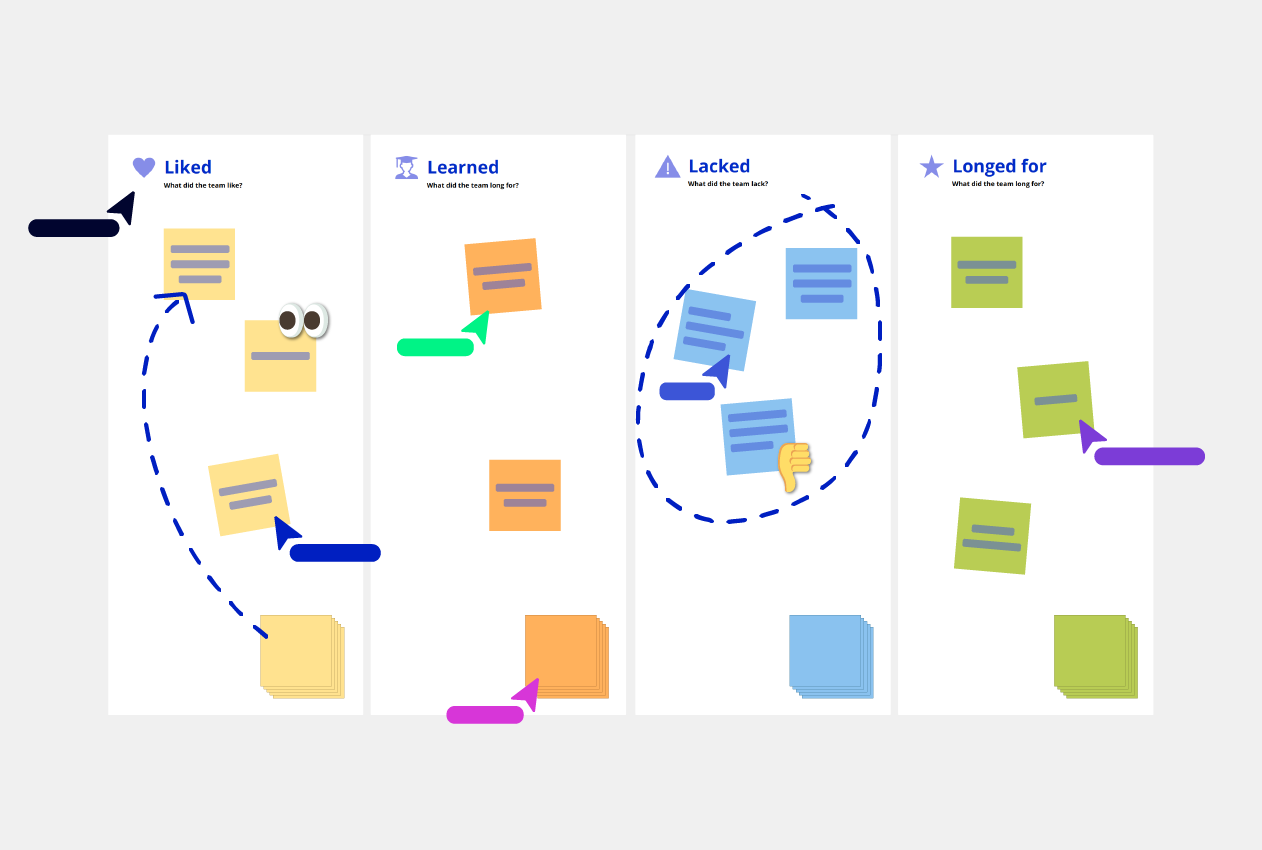The 4L retrospective technique for actionable feedback
The 4L retrospective is a technique used by teams to review and evaluate past performance. It’s a simple framework wherein the team gets together (physically or virtually) to discuss what they liked, what they learned, what they lacked (or loathed) and what they longed for.

What is the 4Ls retrospective technique
The 4L retrospective is a technique used by teams to review and evaluate past performance. It’s a simple framework wherein the team gets together (physically or virtually) to discuss what they liked, what they learned, what they lacked (or loathed) and what they longed for.
The simplicity of the technique lends itself well to sprint retrospectives and is a popular tool used by scrum masters to understand what can be improved during future sprints.
The easiest way to run a 4Ls retrospective is by gathering your agile team and having them write their feedback on sticky-notes and adding them to a whiteboard. With more and more teams working remotely or in a distributed setting, using an online whiteboard and digital sticky notes can greatly improve the effectiveness of your retrospective.
Let us now discuss the steps to running a retrospective using the 4L technique.
How to use a 4L retrospective template
Thanks to Conceptboard’s online whiteboard and ready-made retrospective templates, it is now easier than ever to run a retrospective virtually. Even if your teammates are separated by time zones and geography.

All you have to do is load the template and share the board with your team. Everyone can jump into a board at the same time to review and add feedback. Additional tools like virtual markers, highlighters, shapes, arrows etc ensure your most productive retrospective yet!
Thanks to Conceptboard’s powerful cloud-based functionalities, the sticky-notes and feedback are saved automatically. This board can also be revisited and reviewed a later date.
Sections of a 4Ls retrospective template
The 4Ls retrospective is divided into 4 sections. Each of these constitutes one L of the 4Ls. These are:
Liked – What are the things that went well during the sprint or project? This is a section to highlight the process efficiencies so that these can be repeated. This section can also be used to show appreciation for your team members.
Learned – What were your distinct learnings? Use this section to highlight opportunities for optimization or whether a process should be discarded altogether.
Lacked – What is it that you missed? Was it a lack of guidance? A project management tool? Enough time for a pilot? Identify what could be improved for the next sprint in this section.
Longed for – What is it that could really help improve productivity or efficiency that is currently missing from your current workflow? Don’t shy away from making requests that’ll contribute to your team’s long-term success.
The Online Whiteboard built for agile teams
Run remote ceremonies, sprints & retrospectives like you were in the same room with Conceptboard
4L retrospective in 4 steps
The biggest advantage of this classic technique is that it is easy to run and takes less than 60 minutes. Let’s have a look at how to conduct a 4L’s session in 4 simple steps.
Step 1: Assign a moderator
A moderator ensures that the conversation does not veer off-topic, all feedback is discussed, and the allocated time is respected. If you’re using an online whiteboard, a moderator can also load the template in advance and share it with all participants beforehand.
Step 2: Gather your team
Make sure all relevant individuals are informed ahead of time. Consider time differences. The expectations from the session should also be clarified ahead of time, so everyone’s on the same page. Once the link to the template is shared, the team can jump onto the same board and follow each other’s actions via live cursors.
Step 3: Gather feedback
During the session, the moderator must ensure that all voices are heard and only feedback pertinent to the specific section is discussed. The best practice is to go section wise and only after one section is complete, move to the next one. On the template, have each participant stick to one color of sticky-notes, so the feedback is easy to identify and track.
Step 4: Action plan
The success of any retrospective hinges on the changes the session catalyzed and the actions that were spurred. It is therefore essential to document all feedback and create an action plan. This action plan should be time to bound and re-visited after a point in time. Positive changes, that drive long-term success, are the only true measure of a retrospective.
If you liked the 4L retrospective, you could also try out alternative retrospective techniques and templates that are tailor-made to maximize productivity and drive change. These include the starfish retrospective, the lessons learned retrospective and the sailboat retrospective.

